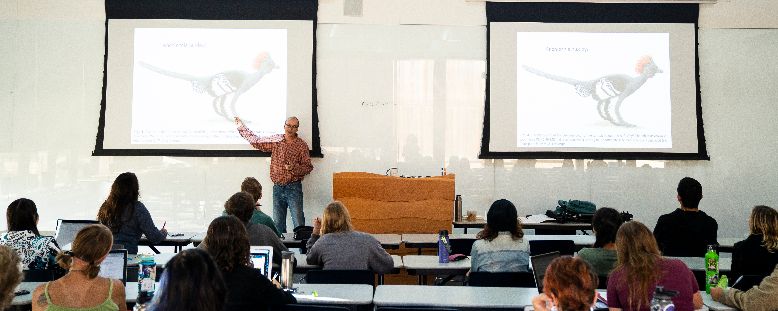Course Development and Course Delivery
When developing course materials, choosing tools to support instruction, and deciding on course delivery options, it is important to consider the achievement of your learning goals and the student experience.
Canvas
The campus learning management system, Canvas, is where students will find the instructional materials for courses they have enrolled in. Each quarter, every course offered in the course catalog will have a course shell created in Canvas, with student enrollments included. This provides faculty with the infrastructure and services to organize and provide access to the materials that support their objectives for the course and provides students with a consistent location and interface for access to course materials.
While instructors may choose to use other platforms for some or all of their course content, using Canvas as the engagement point is strongly encouraged. Contact the FITC for help in configuring course shells and including links to other materials.
Alternatives and Enhancements to In-Person Classroom Instruction
A core component of many courses is in-person classroom instruction. However, in-person instruction is increasingly augmented with asynchronous activities that students engage in outside of scheduled times and alternative synchronous modes for remote interaction during specific times, such as class time, discussion sections, and office hours. These alternatives expand the opportunities for students to interact with the course of study and provide flexibility in how, when, and where those interactions can occur.
Learn more about alternative ways to deliver lectures, facilitate discussions and collaborations between students, conduct assessments, and hold online office hours or other interactive meetings with this link:
Alternatives for Instruction, Engagement, and Assessment
Also, see Common Scenarios for Remote Interaction
If access to your assigned meeting place is not possible in the event of campus disruption or other emergencies, see this one-page guide on using Zoom for Remote Instruction. As with any emergency procedure, it is recommended that these procedures be reviewed and practiced in advance.
Ensuring Success with Alternatives to In-Person Instruction
Employing alternative asynchronous and synchronous experiences should always consider the following:
For the instructor experience:- How does this alternative advance the objectives for the course?
- How will I, as the instructor, develop the component?
- How do I verify the student experience with the component?
- Does the component comply with the guidelines and regulations related to accessibility, universal design, FERPA, copyright, and use of third-party applications?
- Where do I get support if there are issues in creating, deploying, or accessing the component?
- How will students access and interact with the component?
- Do all students have the ability to access and interact with the component?
- How will students learn about the requirement to access and interact with the component?
- How will students learn what the steps are to access and interact with the component?
- Does the component technology support simultaneous access by full course enrollment?
- Where do students get support if they have issues accessing and interacting with the component?
Additional Considerations
The issues of accessibility for all students, FERPA and the protection of student information, the implications of click-through contracts for third-party applications, and compliance with copyright and fair use laws are also critical.
These links will guide you to useful information on:
Third-Party Applications and Click-through Contracts
Copyright and Fair Use
Be sure to review Intellectual property and copyright in course materials during COVID-19 remote teaching: information and language for instructors, as well as the following information:
When developing and populating websites and courses in Canvas, it is important to ensure that you have the right to reuse any content that is not your original creation. It is potentially a violation of the original author's copyright to reuse materials, even those openly published on the web. There is information provided by the UCSC team on copyright with links to the UC systemwide information and this handy, anonymous Fair Use Questionnaire for understanding if your use complies with fair use guidelines.
The Library also provides information on fair use. It is a common misconception that fair use will cover reuse in an educational setting. Be sure to review what UCOP has to say about fair use in research and the classroom.
If you use Google Image Search for an image, ensure you are searching for license-free images. Also, here is a list of free image libraries and other resources and interesting websites about "open content." Also, familiarize yourself with Creative Commons, which provides free, easy-to-use copyright licenses through Flickr and other platforms.
Copyright Resource Links
- Copyright Information from UCSC Security
- Fair Use Questionnaire
- Fair Use from UCSC Library
- Fair Use in Research and the Classroom from UCOP


